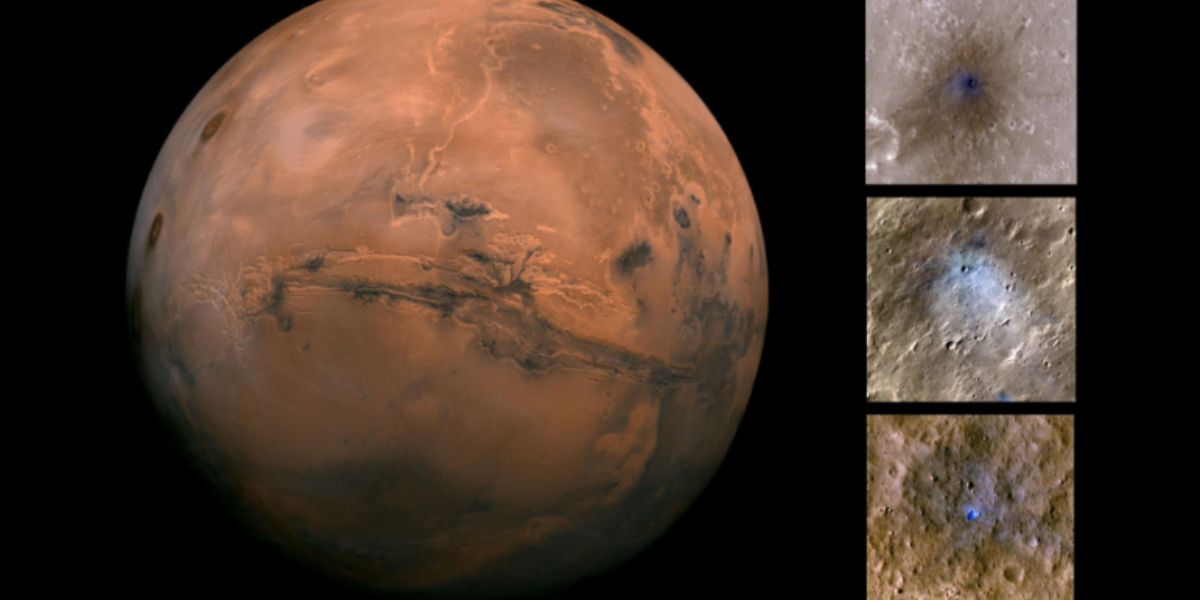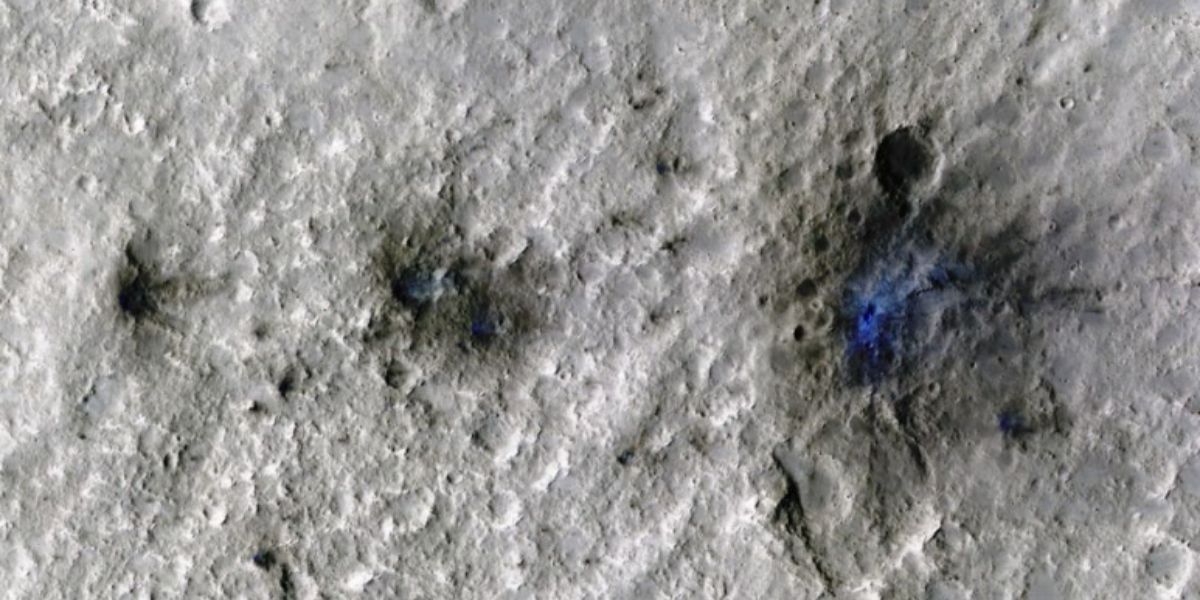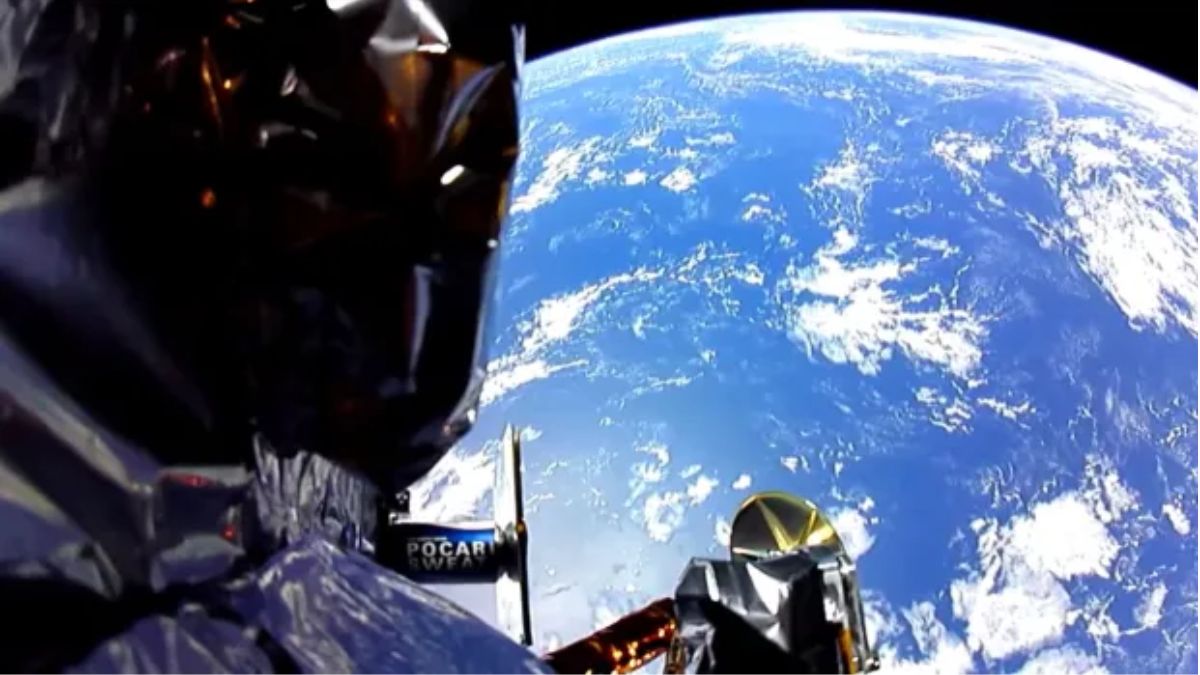NASA's Mars lander captures the 'bloop' of meteorites striking the Red Planet
September 21, 2022 By Awanish Kumar

(Image Credit Google)
Four space rocks collided with the surface of Mars, producing seismic and acoustic waves that were picked up by the Mars InSight lander.
The strikes were detected by InSight's seismometer in 2020 and 2021, making them the planet's first meteoroid detections since the lander started collecting data after landing in 2018. The meteoroid strikes took place in the Elysium Planitia region of Mars, a wide plain that spans the planet's equator, between 53 miles (85 kilometers) and 180 miles (290 kilometers) from the location of InSight.
On September 5, 2021, one of the space rocks—the first that scientists had ever seen—made a stunning and violent entry before shattering into fragments. Each of the at least three different components that struck the Martian surface created a crater.
From orbit, NASA's Mars Reconnaissance Orbiter (MRO) verified the impact sites. When the spacecraft, which was launched in 2005, first photographed the areas with its Context Camera, dark spots on the Martian surface were visible. MRO then used its High-Resolution Imaging Science Experiment camera to gather color photos and close-ups after identifying these impact locations (HiRISE). It's possible that the meteoroids produced smaller craters nearby these impact locations that even HiRISE couldn't see.
[caption id="attachment_42186" align="aligncenter" width="1200"]

A meteoroid impact on the surface of mars discovered by NASA's InSight lander and marked in blue.[/caption]
It was discovered by looking through older InSight data that the lander's seismometer had already detected three prior impacts on May 27, 2020, and on February 18 and August 31, 2021. The four hits resulted in tiny marsquakes with a maximum magnitude of 2.0.
"After three years of InSight waiting to detect an impact, those craters looked beautiful," Ingrid Daubar, a planetary scientist at Brown University in Rhode Island and part of the team that made the discovery, said in a
statement.
Why so few impacts?
Why InSight hasn't found more space rock collisions on the Red Planet baffles planetary scientists. In addition to being located close to the main asteroid belt of the solar system, which is a hotspot for space rocks, Mars has a thin atmosphere that should allow meteoroids to travel through it without being harmed. Due to these variables, more space rocks than, say, Earth's would be expected to reach Mars' surface.
"Impacts are the clocks of the solar system," Raphael Garcia, a planetary scientist at the Institut Supérieur de l'Aéronautique et de l'Espace in France and lead author on the new research, said in the same statement. "We need to know the impact rate today to estimate the age of different surfaces."
"We're learning more about the impact process itself," Garcia said. "We can match different sizes of craters to specific seismic and acoustic waves now."
By Awanish Kumar
I keep abreast of the latest technological developments to bring you unfiltered information about gadgets.


 A meteoroid impact on the surface of mars discovered by NASA's InSight lander and marked in blue.[/caption]
It was discovered by looking through older InSight data that the lander's seismometer had already detected three prior impacts on May 27, 2020, and on February 18 and August 31, 2021. The four hits resulted in tiny marsquakes with a maximum magnitude of 2.0.
"After three years of InSight waiting to detect an impact, those craters looked beautiful," Ingrid Daubar, a planetary scientist at Brown University in Rhode Island and part of the team that made the discovery, said in a statement.
A meteoroid impact on the surface of mars discovered by NASA's InSight lander and marked in blue.[/caption]
It was discovered by looking through older InSight data that the lander's seismometer had already detected three prior impacts on May 27, 2020, and on February 18 and August 31, 2021. The four hits resulted in tiny marsquakes with a maximum magnitude of 2.0.
"After three years of InSight waiting to detect an impact, those craters looked beautiful," Ingrid Daubar, a planetary scientist at Brown University in Rhode Island and part of the team that made the discovery, said in a statement.






